Muhammad, Messenger of God directed by acclaimed Iranian filmmaker Majid Majidi was finally premiered on February 12, 2015, for filmmakers, journalists and film critics at Farhang Theater Hall in Tehran amid much positive critical reception. Now all the Muslims in Iran and across the globe are enthusiastically looking forward to the public screening of this highly-anticipated historical and religious cinematic rendition.
When the accomplished filmmaker settled on directing a movie with a scope as high as this one, he was certainly aware of the fact that he was threading a dangerous path which would invite many opposing as well as supporting critics to review his production; regardless, Majidi decided to take the bull by the horns, so to speak, and launch the project on Eid al-Adha 2011.
Majidi asks Imam Reza’s permission to make his Muhammad biopic
With the launching of this cinematic project, a fresh life was breathed into the body of Iran’s cinema. Majidi has mentioned that he had asked for Imam Reza’s (the eighth Shia Imam) permission when he was visiting the Holy city of Mashhad to participate in Ruyesh Religious Short Film Festival.
The pre-production with a focus on research began in October 2007 and lasted for some three years with the first draft for the screenplay ready by March 2009.
Pre-production Research benefits from Muslim scholarly opinions
One of the distinctive features of the research conducted for this cinematic production was the director’s frequent visits with prominent Muslim scholars and clerics including Iraq's top Shia cleric Grand Ayatollah Ali Sistani, Grand Ayatollah Abdollah Javadi Amoli, and Grand Ayatollah Vahid Khorasani.
script focus on Prophet’s childhood
The first draft of the screenplay was co-authored by Majidi and Iranian filmmaker and screenwriter Kambuzia Partovi. Since Partovi specializes in the field of filmmaking for children and adolescents, one could guess Majidi’s latest cinematic rendition was going to focus on the Prophet’s childhood. Although Majidi himself is mostly known for making poetic movies, he has to his name a number of film titles that feature children as their main cast.
Historical documents and facts have been compiled with the help of scholars, historians and clerics from different countries including Iran, Morocco, Tunisia, Lebanon, Iraq and Algeria for over a year.
220 hectares of land for film’s main location
After completing the first draft of the script, theater director, writer and researcher Hamid Amjad joined the other screenwriters and focused his contribution mostly on writing the dialogues.
The script took a year and a half to be finished. In June 2010 the pre-production was officially launched and by September 2011 the construction of the film set was completed in Prophet Mohammad (PBUH) Cinema Town 55km to Tehran-Qom Highway.
At first the location had been estimated at 100 hectares but as the project advanced and the need for more space for building the film set as well as two other parts of the movie arose, the area was expanded to finally reach 220 hectares. The set is composed of places resembling sixth-century Mecca and Medina during the early years of the life of Prophet Muhammad.
More than 70 percent of the film was shot in Prophet Mohammad (PBUH) Cinema Town and the rest was filmed in Kerman and Asaluyeh in Bushehr Province. Only for shooting the scenes of the advance of Abraha's army to Mecca and the miracle that lead to a shower of stones by flocks of birds which destroyed the invading army, the film crew were required to make a trip to India, but when they failed to strike an agreement with the Indian officials, they finally shot the scene in South Africa.
Ayatollah Khamenei visits set of Prophet Muhammad (PBUH) biopic
In October 2012 the Leader made a visit to the film’s location to the south of Tehran, near the holy city of Qom, where giant replicas of sixth-century Saudi Arabian cities Mecca and Medina were built. This was an important event for the film to the extent that Majidi deemed it a blessing during his press conference. He noted that behind the scenes, the Leader had offered a great speech on the character of the Prophet, the sum of which had been included in the script.
This was the first time the Leader had appeared on the set of a cinematic project. Although, he had visited the set for the historical and religious series ‘Saint Mary’ directed by Shahriar Bahrani before.
Criticisms against the movie: Al-Azhar’s proscription
It should be noted that ever since the production of a film on Prophet Muhammad was announced, some critics from Arab states started to condemn the very reason for making such a movie.
In 2012, one of the world’s highest Sunni authorities and the major center of Arabic literature and Islamic learning in the world - Egypt’s Al-Azhar University - asked Iran to refrain from releasing the movie "so that an undistorted image of the Prophet can be preserved in the minds of Muslims; We call upon all filmmakers to respect religions and Prophets."
Majidi had chosen to keep silent on these objections for years but ultimately decided to respond to all the criticism surrounding his film during his first press conference on January 7, 2015.
“I am aware of their concerns, we have our own sensitivities about religious figures and I wonder why they are criticizing it before actually seeing it,” Majidi had responded.
One of the objections raised by Al-Azhar was Majidi’s choice for using an actor to portray the Prophet’s childhood.
Majidi explained about the extensive amount of research conducted for the project, noting his decision to depict the childhood of Prophet Muhammad was so as to avoid any potential conflict among the Shias and Sunnis regarding the Prophet.
Al Akkad’s The Message did not do Prophet Justice
Once the news of Majidi’s cinematic biopic hit the international media, there were many instances in which his production was set against Moustapha Al Akkad’s Ar-Risalah (released as The Message in 1977 in the United States).
The movie which is known in Iran by the name of Muhammad (PBUH) is the only historical cinematic rendition on the Prophet which became very popular around the world. But this time, Iran, as the first country in the Islamic world, had attempted to make an independent film based on the life of Prophet Muhammad.
It was only natural to question Majidi on the relation of his own production to that of Al Akkad’s. Majidi was of the opinion that Akkad’s Ar-Risalah had failed to do the Prophet justice since the audience was more exposed to battles throughout the film and the image depicted of Islam was of blood, sword and war, thus distorting the true image of Prophet Muhammad (PBUH).
Majidi also noted that the Prophet’s conduct was lifelike and a model for all humanity.
Prophet Muhammad (PBUH) aided calligrapher to design film’s logotype
The movie’s logotype was one of the director’s concerns to such an extent that he decided to hold a competition for the best logo design.
In this competition, sponsored by the Cultural Department of Tehran Municipality, Majidi invited several professional artists to judge the many artworks submitted to this competition, and select the one which would be most apt for his biopic. At the end, 1600 artworks were selected and the first, second, and the third best works were awarded, yet Majidi had not found what he was looking for. Therefore, he sought help from Jalil Rasouli, a master of Persian calligraphy and one of the juries for the logo competition, and asked him to do the artwork himself.
In a press conference, Rasouli unraveled the story behind the logo’s design and how it came to be; “it’s been more than 50 years I’ve been writing in calligraphy and I know everything there is to know about this art, yet writing the revered name of the Prophet was a very difficult task. I did a lot of sketches for the logo and made a number of graphic designs but none of them were to my satisfaction. Ultimately, I appealed to the Prophet himself and asked him for help. So one day I picked the brown ink and dipped my index finger into it and started writing the Prophet’s name. During the time I was writing his name my hand and then my whole body was shaking. I have never before in my life felt the trembles when writing in calligraphy.”
Rasouli interpreted this incident as a sign that this final design was what he was looking for.
The movie’s budget; from rumors to facts
The media, specially the western one, repeatedly wondered about the movie’s budget and reported false and bizarre numbers and figures regarding this issue.
For instance, The Hollywood Reporter had claimed that the making of Majidi’s Muhammad biopic had cost some 30 million dollars. This claim came as Sadeghian the Chief of Noor Taban Film Company explained about cost details for this cinematic project.
Based on Sadeghian’s comments, building the replica of Mecca cost about 5 million dollars, the city of Medina about 1 million dollars and the construction of the office building around 400,000 dollars.
100,000 dollars went to script, $200,000 to research, $5.4 million to pre-production, $11 million to production, and $5.3 million to post-production costs.
With these figures, the total cost for the movie would have been something around $22 million.
Inviting international and professional crew
The domestic audience aside, one of Majidi’s concerns was to have a number of international figures assist him with his cinematic project. This brought about the anger of some cinematographers criticizing Majidi for not employing the Iranian professionals instead.
These objections came to a head when the names of Vittorio Storaro as the cinematographer, Miljen Kreka Kljakovic as the art director, Scott E. Anderson as the visual effects supervisor, and A. R. Rahman the film score composer were mentioned.
The cooperation of Iran’s professional crew with such famous and at times Oscar-winning names managed to smooth over the tension to some extent.
Vittorio Storaro: I was invited to Muhammad, Messenger of God biopic
Vittorio Storaro, the Italian cinematographer and three-time Oscar-winner for masterpieces such as Bernardo Bertolucci’s Last Tango in Paris and Francis Ford Coppola’s Apocalypse Now, was present during the closing ceremony of the 32nd Fajr International Film Festival and awarded with a beautiful calligraphy done by Master Mojtaba Malekzadeh.
On his joining Majidi’s production, Storaro said that he had been working on a project in Algeria and so needed to learn about the culture of that region.
“I have read a number of books on Islam and as soon as I finished the last book I noticed I had an email inviting me to join a cinematic project named Prophet Muhammad,” said Storaro, believing that the concurrency of his finishing his research on Islam and being invited to Majidi’s project was not a coincidence, but rather a divine invitation.
Unveiling of Majidi’s Muhammad biopic after the 33rd Fajr Festival
Holding the first press conference for Muhammad, Messenger of God and the visit of media and cinema managers to Majidi’s film location which took place in January 2015 signaled the imminent unveiling of this great cinematic project.
During the press conference, the Head of Iran’s Cinema Organization Hojatollah Ayoubi told reporters the movie would be premiered at the 33rd Fajr International Film Festival. Majidi himself also promised the screening of the film at the opening ceremony of the festival on January 31.
The news traveled fast and in no time everyone was asking about this movie, especially since it had been announced Kourosh Cinema complex was going to screen the film for the public; the screening was of course canceled reportedly due to some technical difficulties.
Finally, Majidi’s Muhammad biopic was screened after the Fajr Festival on February 12 for filmmakers, journalists and film critics at Farhang Theater Hall in Tehran.
It is still undecided when the movie is going to be screened for the Iranian as well as the international audience. The people in charge of the project are, however, seeking to attain ideal conditions for the national and international release of the film so that this time the true, beneficent face of the Prophet of Islam will be introduced to the world.
Haddad-Adel recommends Majidi as cultural figure of year
Gholam-Ali Haddad-Adel, the head of the Iranian Academy of Persian Language and Literature, recommended Majid Majidi as the cultural figure of the current Iranian year noting that Majidi was a good candidate for this title for being the director of the movie Muhammad, Messenger of God.
Among the Iranian artists, scholars and officials who reviewed Majidi’s recent production is the author and playwright Seyed Mahdi Shojaee who dubbed the film as a remarkable work of art and a pioneering movement in the religious cinema.
This movie critic who had assisted Majidi in the process of writing the screenplay for the movie Baduk (1992), believes the art of this film is in its ability to appease a historical necessity. He asserted that Muhammad, Messenger of God is an authentic account of the life of the holy prophet, a narrative far from the ill intentions and falsifications and distortions of the truth. This story is an artistic and elegant recitation of authentic and documented events.
The Plot Summary
Muhammad, Messenger of God begins with the Muslims’ being boycotted in Shib Abi Talib, and moves back to the time before the birth of the Holy Prophet. In this cinematic rendition, Majidi gives an account of the events from that time to when Muhammad (PBUH) turns 12. The scenes of Muhammad’s mother’s death in the village of Al-Abwa and the prophet’s infancy and early childhood in the village of Sadia are also included in the movie.
Muhammad, Messenger of God concludes with the Holy Prophet’s first trip to Sham and arriving at the Monastery of Behaira. Behaira was the monk who prophesied the coming of the prophet of Islam to Abu Talib.
Cast and Crew
The cast members were selected under the supervision of Majidi and Italian makeup artist Giannetto De Rossi who collaborated in the great project. Three-time Academy Award winning Italian cinematographer Vittorio Storaro also contributed to the project. Storaro who has great projects such as Apocalypse Now, Reds and The Last Emperor, visited Iran last year to meet with the Iranian cast and crew.
The cast includes Alireza Shoja-Noori as Abdul Mutalib (Grandfather of the Prophet Muhammad), Mehdi Pakdel as Abu Talib (the Prophet’s uncle) Sareh Bayat as Halimeh (wet-nurse), Mina Sadati as Aminah bint Wahb (Prophet’s mother), Mohsen Tanabandeh as Samuel the Jewish merchant, Dariush Farhang as Abu Sufyan (staunch opponent of the Prophet), Rana Azadivar as Umm Jamil (wife of Abu Lahab), Hamidreza Tajdolat as Hamza (uncle of Prophet), Sadegh Hatafi as Behaira the Christian monk, Mohammad Asgari as Abu Lahab (uncle of the Prophet), and some 500 other actors and actresses.
As was already mentioned by Majidi, the film seeks to depict a true image of Prophet Muhammad. The film shows how Muhammad (PBUH) was the source of kindness and amity since the early years of his life.
The plot of the film is such that it could allow for a second and third sequels, thus turning it into a trilogy of the Prophet’s life, according to Majidi himself.
MS/LR
MNA
END


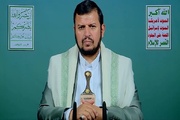
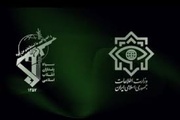
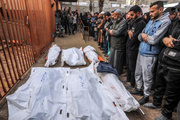
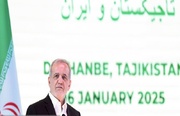
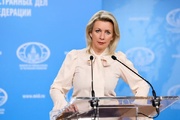
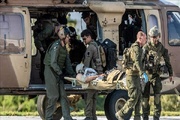
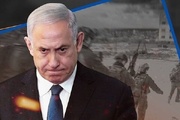
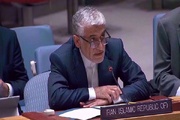

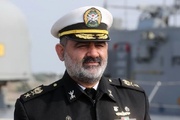
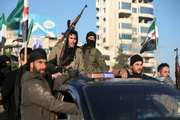
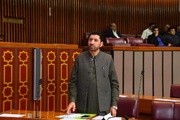
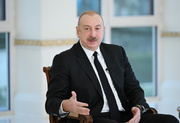

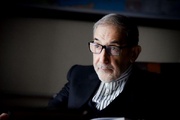
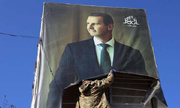

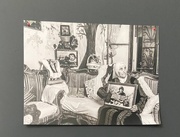
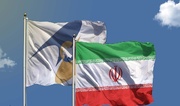
Your Comment